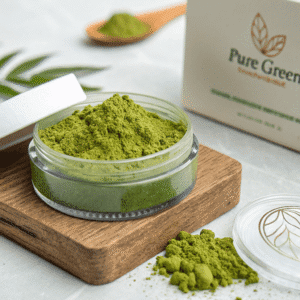Introduction to Macaroni and Cheese
macaroni and cheese recipe is a dish that holds a special place in the culinary landscape, celebrated for its satisfying combination of pasta and creamy cheese. The origins of this beloved comfort food can be traced back to the early 18th century, with references appearing in English and Italian cookbooks. While the fundamental components—elbow macaroni and cheese—remain consistent, the way in which it is prepared and enjoyed has evolved dramatically over time.
In Europe, particularly in Italy, a form of macaroni and cheese has been made for centuries, known as “maccheroni alla vongole”. The dish typically featured pasta baked with a blend of cheeses. As macaroni made its way across the Atlantic to America, its accompanying ingredients diversified. The cheese sauce became richer, creamier, and more indulgent, giving rise to a native adaptation that remains a staple on dining tables across the nation.
This dish’s appeal lies not only in its delicious flavors but also in its versatility. There are numerous variations of macaroni and cheese that cater to different tastes and dietary preferences. From indulgent dishes loaded with savory meats and vegetables to lighter versions featuring whole wheat pasta and low-fat cheese options, the possibilities are endless. Macaroni and cheese has solidified its status as a quintessential American comfort food, perfect for gatherings, family dinners, or even solitary indulgence.
With its rich history and boundless variations, the macaroni and cheese recipe is a fantastic way for home cooks to explore their culinary creativity. As you continue reading this blog post, you’ll discover not only how to craft the perfect homemade version but also insights into the different styles that have emerged globally. This timeless dish is not just food; it is a cultural phenomenon that invites everyone to enjoy its warmth and flavor.
Ingredients: What You Need for the Perfect Mac and Cheese
Crafting an exceptional macaroni and cheese recipe begins with selecting the right ingredients. The base of any mac and cheese is, naturally, the pasta. Traditional elbow macaroni is the most common choice, but alternatives, such as shells or cavatappi, can add a unique texture. Aim for high-quality pasta that can hold the cheese sauce well.
Next, the cheese selection is crucial for a rich flavor. A blend of cheeses often yields the best results. Sharp cheddar is the quintessential cheese for macaroni and cheese due to its bold flavor. For added creaminess, incorporate some mozzarella or Monterey Jack. If you want to experiment, consider using Gruyère or Fontina for a gourmet touch. Remember to shred cheese yourself rather than buying pre-shredded varieties, as it melts better and ensures a creamier texture.
Milk is another essential component of a macaroni and cheese recipe. Whole milk is typically recommended, as its fat content creates a creamier sauce. For an indulgent dish, consider substituting a portion of the milk with heavy cream. If you are aiming for a lighter version, you could use half-and-half or low-fat milk. Additionally, butter is necessary to create the roux, which acts as the base for the cheese sauce. Unsalted butter is preferred, as it allows you to control the saltiness of the final dish.
Lastly, seasoning can elevate the flavor of your macaroni and cheese. Common additions include salt, pepper, and garlic powder, but feel free to experiment with spices like paprika, mustard powder, or cayenne pepper for a hint of heat. Fresh herbs, such as thyme or parsley, can also enhance the taste. Be mindful of the balance, as each ingredient contributes to the overall flavor profile of this timeless comfort food.
Step-by-Step Guide: How to Make Macaroni and Cheese from Scratch
Creating a homemade macaroni and cheese recipe from scratch is a rewarding process that yields a creamy, cheesy dish, perfect for any comfort food enthusiast. To begin, gather the following essential ingredients: elbow macaroni, butter, all-purpose flour, milk, shredded cheese (cheddar is a classic choice), salt, and pepper. Before embarking on this culinary journey, ensure you have the needed kitchen tools: a large pot, a saucepan, a whisk, and a baking dish if you desire a baked version.
Start by boiling a large pot of salted water. Adding the elbow macaroni will typically require 7-8 minutes of cooking until al dente. Once cooked, drain the pasta and set it aside. In the meantime, prepare the cheese sauce by melting 4 tablespoons of butter in a saucepan over medium heat. Once the butter is melted, stir in 4 tablespoons of flour, mixing continuously for about 2 minutes until the mixture resembles a smooth paste, known as a roux.
Gradually whisk in 2 cups of milk, ensuring there are no lumps. Continue to cook this mixture while whisking frequently until it thickens, which should take about 5-7 minutes. At this point, season the sauce with salt and pepper to taste. Remove the saucepan from heat, then incorporate 2 cups of shredded cheese, stirring until fully melted and smooth.
Combine the cooked macaroni with the cheese sauce, mixing thoroughly to coat the pasta evenly. For those who enjoy a baked finish, transfer the mixture into a greased baking dish. Optionally, sprinkle additional cheese or breadcrumbs on top, then bake in a preheated oven at 350°F (175°C) for about 20 minutes, or until golden and bubbly. This homemade macaroni and cheese recipe offers a delightful balance of textures and flavors, making it a staple in any home kitchen.
Creative Variations: Adding More Flavor to Your Mac and Cheese
Macaroni and cheese is a beloved comfort dish that can easily be tailored to suit various tastes and preferences. By exploring creative variations on the classic macaroni and cheese recipe, you can enhance the flavor profile and introduce exciting new ingredients. One popular approach is to experiment with different types of cheese. While cheddar is the traditional choice, consider incorporating Gouda, Gruyère, or even a sharp blue cheese to create a more complex taste. The melty richness of these cheeses can elevate your dish significantly.
In addition to exploring alternative cheeses, you may want to add proteins to your macaroni and cheese. Items such as cooked bacon, diced ham, or even pulled pork can turn a simple mac and cheese recipe into a hearty meal. For those looking to make a vegetarian option, roasted vegetables like broccoli, spinach, or even sun-dried tomatoes can provide both nutrition and a burst of flavor. Incorporating seasonal vegetables not only enhances the taste but also adds visual appeal to the dish.
Another effective way to add depth is through the use of herbs and spices. Classic seasonings like garlic powder, onion powder, or paprika can infuse the dish with robust flavors. Additionally, fresh herbs such as thyme, rosemary, or basil can give your macaroni and cheese a gourmet touch. For a more adventurous option, try creating BBQ Mac and Cheese by adding BBQ sauce and grilled chicken, or Veggie Mac by blending in various sautéed vegetables and a touch of pesto for freshness. Gourmet Truffle Mac can be achieved by using truffle oil and a blend of exotic cheeses, making the dish truly decadent.
As you explore these variations, there are endless possibilities to transform a classic macaroni and cheese recipe into a unique culinary experience that caters to your specific tastes and preferences.
Healthy Alternatives: Making Mac and Cheese Healthier
Macaroni and cheese, often celebrated for its indulgent and comforting qualities, can be adapted to cater to various dietary needs without compromising on taste. By making thoughtful substitutions, one can create a delicious macaroni and cheese recipe that is lower in fat, gluten-free, or entirely plant-based, ensuring that this beloved dish remains accessible to everyone.
For those looking to reduce carbohydrates, consider using spiralized vegetables, such as zucchini or butternut squash, in place of traditional pasta. This not only cuts down on calories but also adds nutritional value and color to the meal. Combine these veggies with a rich, creamy sauce made from blended cashews, nutritional yeast, and a splash of almond milk to replicate that classic cheese flavor.
If gluten is a concern, opting for gluten-free pasta variations allows for the enjoyment of macaroni and cheese without the adverse effects associated with gluten. Many brands offer high-quality gluten-free pasta made from alternative grains like quinoa or brown rice, providing a similar texture while ensuring that those with gluten sensitivities can partake in this comfort food.
For a vegan twist on this classic dish, utilize plant-based cheeses or a homemade sauce made with potatoes and carrots, which when blended create a creamy consistency similar to cheese sauce. Nutritional yeast can also be added for a cheesy flavor while being entirely dairy-free. These alternatives maintain the essence of macaroni and cheese while aligning with various dietary restrictions.
Moreover, consider incorporating vegetables like broccoli, spinach, or peas into the mix. This not only boosts the nutritional profile of the meal but also introduces diverse textures and flavors. In conclusion, with these innovative substitutions and additions, creating a healthier version of macaroni and cheese can enhance the dish’s appeal to health-conscious individuals without sacrificing the indulgent experience everyone loves.
Serving Suggestions: Pairing Your Mac and Cheese
Macaroni and cheese is a beloved comfort food that pairs beautifully with a variety of side dishes and beverages, enhancing the overall dining experience. To create a well-rounded meal, consider complementing your macaroni and cheese recipe with sides that offer contrasting flavors or textures. For instance, a crisp green salad with a zesty vinaigrette can provide a refreshing balance to the creamy indulgence of macaroni and cheese.
Some popular salad options include a classic Caesar salad, with its crunchy romaine and savory dressing, or a simple mixed greens salad topped with cherry tomatoes and cucumbers. Both salads add a lightness that contrasts well with the richness of the cheese sauce, making every bite more enjoyable.
In addition to salads, crusty bread serves as an excellent accompaniment. A warm baguette or garlic bread can be a delightful option, providing a satisfying crunch that complements the smoothness of the macaroni and cheese. For those looking to infuse even more flavor, consider serving a cheese-stuffed bread, which can amplify the cheesy experience.
When it comes to beverages, choosing the right drink can further enhance your meal. A crisp white wine, such as a Sauvignon Blanc, is an excellent option as its acidity cuts through the richness of the dish. For a non-alcoholic option, a sparkling water with a hint of citrus can also cleanse the palate and refresh the senses.
Moreover, presenting macaroni and cheese in creative ways can make the dish even more appealing. Consider serving it in an individual bowl topped with crispy breadcrumbs, chopped herbs, or crumbled bacon, or opt for a rustic casserole style with layers of macaroni and cheese and a crunchy topping. These serving suggestions can elevate your dining experience and leave guests wanting more.
Storage and Reheating: Keeping Your Mac and Cheese Fresh
Proper storage and reheating techniques play a vital role in preserving the quality and flavor of your delicious macaroni and cheese recipe. Following these guidelines can help ensure that your comfort food remains creamy and satisfying for future meals.
Firstly, to store leftover macaroni and cheese, allow it to cool down to room temperature before packaging it. This step is crucial as it prevents condensation, which can lead to soggy pasta. Once cooled, transfer the mac and cheese into an airtight container. For short-term storage, place the container in the refrigerator, where it can stay fresh for up to three to five days. If you plan to keep it longer, consider freezing it. Place smaller portions in freezer-safe containers or heavy-duty freezer bags, and be sure to remove as much air as possible before sealing. This method will help maintain the dish’s quality for about three months.
When it comes time to reheat your macaroni and cheese, the primary goal is to regain that delightful creamy texture. For refrigerator storage, you can reheat it in the microwave or on the stovetop. If using the microwave, place the mac and cheese in a microwave-safe dish, cover it with a microwave-safe lid, and add a splash of milk to promote moisture. Heat it in intervals of 30 to 60 seconds, stirring in between until heated through. Alternatively, for stovetop reheating, transfer it to a pan, add a bit of milk or cheese, and stir over low heat until warmed up. If you are reheating from frozen, it is advisable to thaw it in the refrigerator overnight before reheating.
Additionally, leftover macaroni and cheese can be creatively repurposed. Consider transforming it into a casserole by baking it with vegetables and a crunchy topping. This not only provides a delightful twist but also extends the life of your macaroni and cheese recipe, offering new meals without wasting food.
Troubleshooting Common Issues in Macaroni and Cheese
Preparing a macaroni and cheese recipe can be a joyful experience, yet even the most experienced cooks may encounter a few common issues. Understanding how to troubleshoot these problems is essential to ensure a creamy, delicious dish that doesn’t fall short of expectations.
One issue that can occur is a grainy cheese sauce. This problem typically arises due to rapid heating or the addition of cold cheese to a hot mixture. To avoid this, it is advisable to use a lower heat setting and gradually incorporate the cheese while stirring continuously. If you find yourself with a grainy sauce, you can attempt to rescue it by blending the sauce with an immersion blender or by whisking in a small amount of cream to re-emulsify the mixture.
Another common pitfall is overly dry pasta. This can happen if the macaroni is cooked too long before being mixed with the cheese sauce. To remedy this, it is crucial to undercook the pasta by about two minutes before draining. The macaroni will continue to cook as it bakes in the oven, absorbing some of the cheese sauce, resulting in the perfect texture. If the pasta has already dried out, adding a splash of milk or extra cheese sauce can help restore moisture.
In addition, clumping can occur when the cheese is added too quickly or when the pan is overcrowded. To prevent this, ensure that your cheese is finely shredded and ideally at room temperature before adding it to the hot pasta. Stir gently to allow even distribution and melting of the cheese. If clumping has already happened, you may wish to return the mixture to low heat while stirring vigorously to facilitate melting.
By keeping these solutions in mind, you can enhance your macaroni and cheese recipe and avoid disappointing results, ensuring a delightful comfort food experience each time.
Homemade macaroni and cheese is a culinary experience that transcends the simplicity of its ingredients. The act of preparing this comfort food from scratch brings not only a sense of accomplishment but also a profound satisfaction that store-bought varieties cannot replicate. The creamy texture of freshly made cheese sauce meeting perfectly cooked pasta creates a dish that envelops the senses with warmth and nostalgia.
One of the remarkable aspects of a macaroni and cheese recipe is its adaptability. Home cooks can personalize their dishes to suit varying preferences and dietary needs by incorporating different cheeses, seasonings, and add-ins such as vegetables or proteins. This versatility allows for endless creativity, encouraging both novice and seasoned chefs to experiment and innovate in the kitchen. Whether one’s palette craves a sharp cheddar, a creamy Gruyère, or even a spicy pepper jack, the possibilities are truly limitless.
The satisfaction derived from a home-cooked macaroni and cheese lies not only in its taste but also in the memories created while making and sharing it with others. This beloved dish enhances gatherings, special occasions, and everyday meals, making it an integral part of many households. When family and friends come together over a warm, cheesy plate of macaroni and cheese, it fosters connection and a sense of belonging. It is this element of human experience that often elevates a simple recipe into something much more significant.
Conclusion
In conclusion, embracing the effort of creating homemade macaroni and cheese is undoubtedly worth it. The love and care poured into crafting a personal rendition of this classic dish lead to a culinary delight that is cherished more than its mass-produced counterparts. With every scoop, there’s an opportunity for comfort, creativity, and joy, making this beloved comfort food not just a meal, but a cherished tradition.



